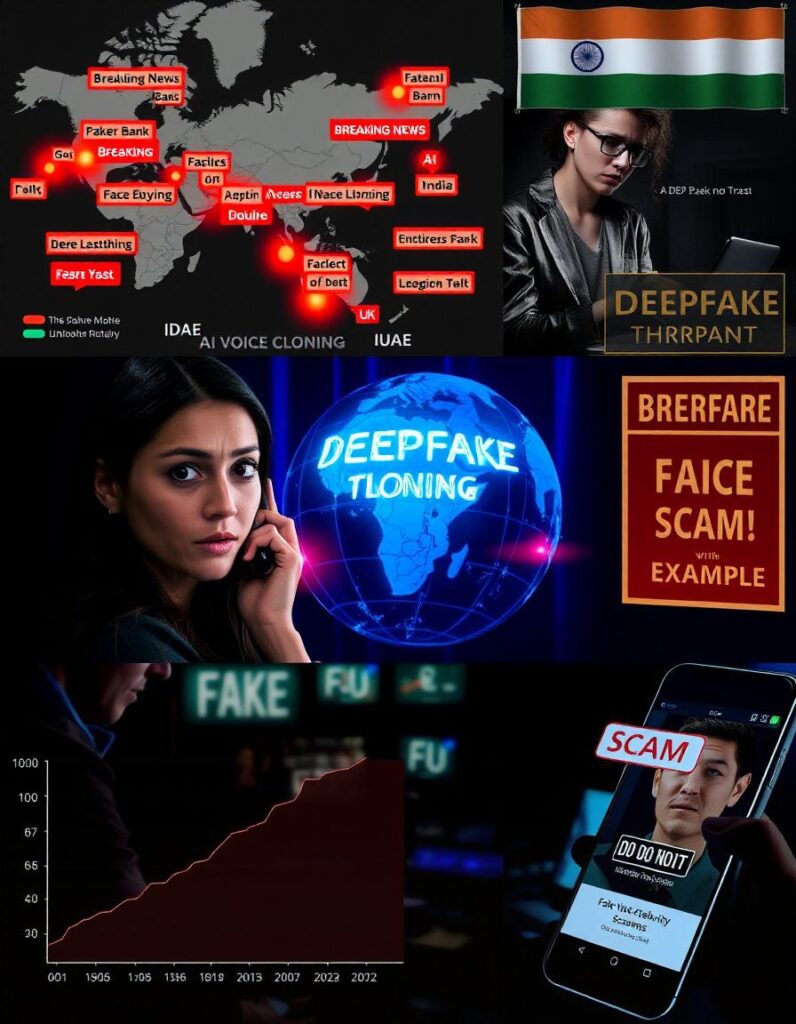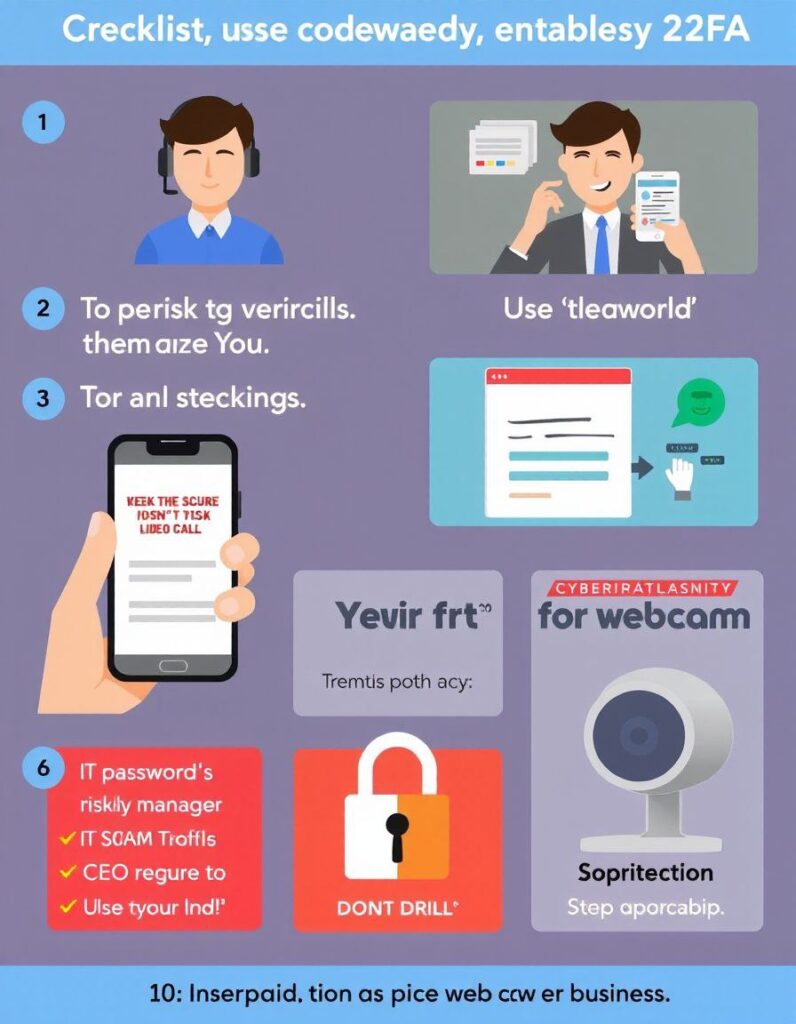₹200 Crore Deepfake Scam: AI Heist Stuns Global Corporates – India on High Alert
In one of the most sophisticated cybercrimes ever recorded, a Hong Kong-based multinational corporation lost ₹200 crore (US$25.6 million) after fraudsters used deepfake technology to impersonate the company’s CFO in a live video call. This incident is more than just a corporate loss — it’s a global wake-up call for digital security, especially for India’s fast-growing tech economy.

How the ₹200 Crore AI Scam Unfolded
It started like any routine business meeting. Employees of the firm received a video call from their Chief Financial Officer, who appeared entirely genuine — from voice and facial expressions to his signature gestures and conversational tone.
During the call, the “CFO” urgently requested a series of fund transfers for what he claimed was a confidential company acquisition. The call lasted nearly 28 minutes, during which the deepfake interacted in real time, referenced internal projects, and appeared completely legitimate.
By the time doubts arose and further verification was attempted, the company had already transferred ₹200 crore, which had been routed through multiple offshore accounts.
Inside the Deepfake: How the AI Fraud Was Engineered
Cybersecurity investigators revealed the disturbingly simple and low-cost method used to execute the scam:
1. Data Gathering
- Public earnings calls, interviews, and panel discussions provided enough video material.
- Podcasts and recorded speeches were scraped for clean voice samples.
2. Deepfake Creation
- AI tools like ElevenLabs were used to clone the CFO’s voice.
- Real-time face-swapping software was employed to create a live video avatar.
3. Social Engineering
- Emails spoofed to look like internal corporate communication.
- Meeting invites, calendar events, and even company-branded documents were faked.
“These scammers spent nearly three months studying internal communication patterns,” said cybersecurity analyst Rohan Sharma. “They even used real meeting IDs from past calls — that’s how deep this went.”
What Makes This Scam So Dangerous?
This wasn’t just a copied voice or a fake video clip — it was a real-time, AI-powered impersonation designed to bypass every layer of trust:
✔ Live Interaction: The deepfake could answer questions mid-call.
✔ Context Awareness: It referenced actual employees and ongoing projects.
✔ Layered Deception: Even the meeting environment looked authentic.
And the tools used? Available on dark web marketplaces for under ₹50,000.
Why India Should Be Alarmed
Though this particular incident occurred in Hong Kong, India is far from safe. In fact, similar deepfake frauds are rapidly increasing across the country:
- Kolkata: A branch manager transferred ₹12 crore after a video call with a “regional head.”
- Bengaluru: Fraudsters cloned a CEO’s voice to approve fake vendor payments.
- Delhi: Political party workers followed fake video instructions from “senior leaders.”
According to the Indian Cyber Crime Coordination Centre (I4C), deepfake-related cybercrimes have surged 400% since 2022 — with total reported losses exceeding ₹1,200 crore.
How to Protect Yourself and Your Company
Cybersecurity experts recommend an urgent rethinking of verification protocols:
For Employees:
- Always confirm large financial requests through a secondary channel.
- Use code words or secondary passwords for sensitive transactions.
- Be alert for unusual blinking, audio delays, or unnatural facial movements on video calls.
For Companies:
- Implement deepfake awareness training across departments.
- Enforce multi-layered approvals for high-value transactions.
- Explore blockchain or AI-based verification tools for internal communication.
“Human judgment is no longer enough,” says Pavan Raj, CEO of cybersecurity firm Kratikal. “We now need AI tools to detect AI-driven attacks.”
Legal Vacuum: India’s Laws Lag Behind
At present, India does not have specific legislation targeting deepfake scams.
- Section 66D of the IT Act covers impersonation through digital means but offers a maximum penalty of just three years — woefully inadequate for crimes involving hundreds of crores.
While lawmakers are working on new digital safety bills, legal experts fear it may be too little, too late.
Even the Delhi High Court recently stated:
“Our laws are running years behind this technology.”
What This Scam Means for All of Us
This case signals the rise of a new generation of cybercrime — powered by intelligent, adaptive, and disturbingly realistic AI.
- No one is immune: From startups to Fortune 500 companies.
- Trust is broken: How do we verify what’s real anymore?
- Speed is critical: Awareness, training, and AI-driven defense tools are no longer optional — they are essential.
As one global cybersecurity leader summed it up:
“This isn’t just about stolen money. It’s about losing trust in everything we see and hear online.”
The ₹200 crore deepfake scam isn’t just a headline — it’s a sign of things to come.

In a world where AI can wear any face, speak in any voice, and fake any identity, companies must evolve faster than the threat.
🤖 The question is no longer: ‘Is this real?’
❗ The real question is: ‘Are we ready?’
Read This Also:-
Elon Musk Drops Lawsuit Against OpenAI—But Says He’ll ‘Expose the Truth’ in New Tell-All”
Best AI Tools for Content Creators in 2025: From Idea to Viral Post in 5 Minutes
The Dark Side of AI Tools 2025: Data Privacy, Deepfakes, and What No One Tells You
Sarvam AI and IndiaAI Mission: India’s Bold Step Towards Sovereign AI
Hi, I’m Santu Kanwasi, a passionate blogger with over 2 years of experience in content writing and blogging. I create original, informative, and engaging articles on a wide range of topics including news, trending updates, and more. Writing is not just my profession—it’s my passion. I personally research and write every article to ensure authenticity and value for my readers.
Whether you’re looking for fresh perspectives or reliable updates, my blog is your go-to source!






